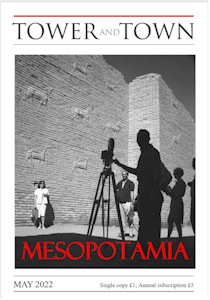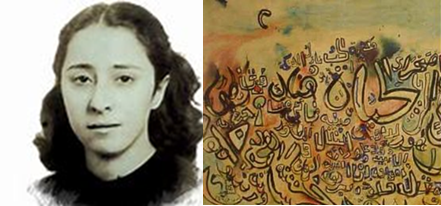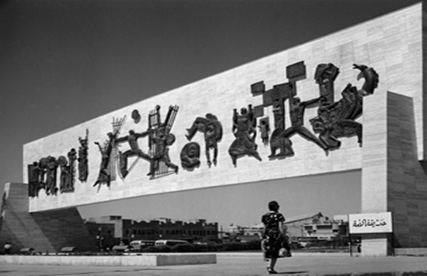

Tower and Town, May 2022 (view the full edition) (view the full edition)Iraq and the Modernism CenturyThe history of thoughts, movements, transmissions, ideas, inventions, and migration could offer insights into the development dynamics that shape our world. Early 20th century Iraq lends itself to this by virtue of being at a juncture in history when transmission of modernism from the west inspired indigenous ingenuity. By modernism I am here referring to style or movement that aims to depart significantly from classical and traditional thoughts or forms. And it is in this context that this year, 2022, is truly symbolic in that it is in fact the centenary for the birth of western modernism in art and literature, when the barely two year old state of Iraq was aspiring for independence and modernity. Ferment of the Iraqi Modern Mind-Set On 11 November 1920 the Ottoman provinces in Mesopotamia were brought together as the state of Iraq under British rule according to a League of Nations mandate. In the following year,1921, the Hashemite Emir Faisal from Mecca was proclaimed king of Iraq signalling departure from Ottoman decay and embrace of western methods. Regretfully, seeds of instability were sewn as only nominal independence was granted at the end of the mandate in 1932. The fledging new nation of Iraq endured turmoil and challenges; on the other hand, the discovery in 1927 of vast oil fields in the region of Kirkuk brought economic improvements that facilitated the rolling out of modernisation plans. This included a revitalised national educational programme centred on Arabic language and history using European education methods. This was spearheaded by the Director General of Education, Sati' Al-Husri (1880-1968). Al-Husri was the intellectual prophet of Arab secular nationalism who was sympathetic to the German theory of the nation and an ardent opponent of imperialism. This proved to be invaluable for both the masses and the elites sector which was emboldened by the Mesopotamian diversity, the western outlook, and the newly found Pan-Arab fraternity. Paris 1922 1922 is considered a stellar year, which the poet Ezra Pound (1885-1972) described as year one of modernism because of the constellation of pioneering talents that gathered in Paris during the year. After all, It was in 1922 that the expatriate Irish writer James Joyce (1882-1941) published in Paris his ground breaking Ulysses, and T.S. Eliot (1888-1965) published The Waste Land. And it was on the night of 18 May 1922 that these two figures joined the other giant of literary modernism, Marcel Proust (1871-1922), the creative cubist Pablo Picasso (1881-1973), and Igor Stravinsky (1882-19710, whose musical compositions are touchstones of modernism, for what is now considered to be the fabled modernism dinner at a grand hotel in Paris, the Majestic. Of Iraqi Vision and Verse  Just over a year after the modernism gathering at the Majestic a special girl was born in Baghdad. Nazik al-Malaika (1923-2007), was educated at the University of Baghdad and the University of Wisconsin-Madison (USA), and was among the first Arab poets to expound "Shuar Hur" (free verse) after the Iraqi pioneer Badr Shakir al-Sayyab (1926-1964). She wrote poetry at a very young age and published in 1947 what critics describe as a revolution in Arabic poetry, "The Cholera". One of her contemporaries, the artist, architect and scholar Issam al-Said (1938-1988), immortalised her poem, City of Love (Medinat al Hub), in a 1963 painting. This case of Iraqi modernism illustrates maturity and fluidity in fusing different art forms and combining both traditional and modern techniques through employing Arabic calligraphy and heritage references. It is also interesting to add that Issam Al-Said was actually the architect for the Central Mosque in London. In addition, it is worthwhile pointing out that the theme of bridging the gap between modernity and heritage was the hallmark of many Iraqi artists from that era, including the pioneers Faiq Hassan (1914-1992) and Jawad Saleem (1919-1961). One of the notable works of this genre was Saleem's Nasb al-Hurriyah (Monument to Freedom), in which Iraqi independence was commemorated by incorporating elements from the ancient Iraqi and Arabic heritages within modern sculpture. Saleem met his future wife Lorna at the Slade School of Fine Arts, London. Lorna Saleem (1928-2021) relocated to Baghdad in 1950 as an artist and educator in Iraqi modernism. Unfortunately the march of the modernists faded away some three decades later when the dark clouds of war engulfed Iraq, leaving mostly yearnings in diaspora.  Raik Jarjis |